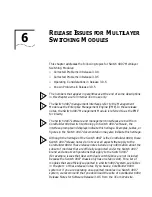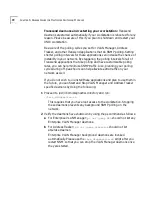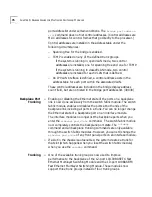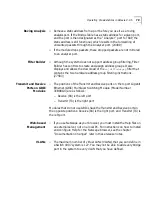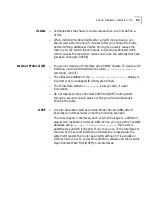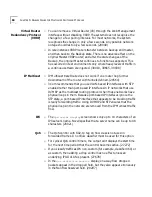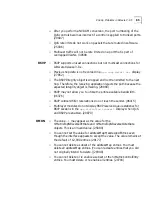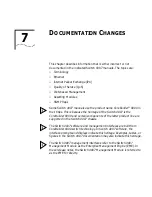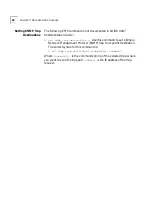
Operating Considerations in Release 3.0.5
79
Roving Analysis
■
Remove a static address from a port before you use it as a roving
analysis port. If the Bridge Table has a static address for a given port,
and the port is then designated as the “Analyzer” port for RAP, the
static address is still functional, which results in the forwarding of
unwanted packets through the Analyzer port. (24499)
■
If the module drops packets, these dropped packets are not mirrored
to an analyzer port.
Filter Builder
■
Although the system does not support address group filtering, Filter
Builder has controls to create and assign address groups. It also
displays and allows the download of the
rejdiffaddrgrp
filter that
contains the two hardware address group filtering instructions.
(27583)
Transmit and Receive
Ports on GBIC
Modules
■
The positions of the Transmit and Receive ports on the 4-port Gigabit
Ethernet (GBIC) Multilayer Switching Module (Model Number
3CB9RG4) are as follows:
■
Receive (RX) is the left port
■
Transmit (TX) is the right port
Modules that do not use GBICs have the Transmit and Receive ports in
the opposite positions: Receive (RX) is the right port, and Transmit (TX) is
the left port.
Web-based
Management
■
If you use Netscape as your browser, you must install the Help files on
an external server, not on a local PC. For instructions on how to install
and configure Help for the Netscape browser, see the chapter
“Documentation Changes” later in these release notes.
VLANs
■
The maximum number of virtual LANs (VLANs) that you can define in
a Switch 4007 system is 127. You may not be able to add every bridge
port in the system to every VLAN that you have defined.
Summary of Contents for 4007
Page 10: ......
Page 32: ...32 CHAPTER 3 RELEASE ISSUES FOR MANAGEMENT MODULES...
Page 64: ...64 CHAPTER 5 RELEASE ISSUES FOR LAYER 2 SWITCHING MODULES...
Page 128: ......

